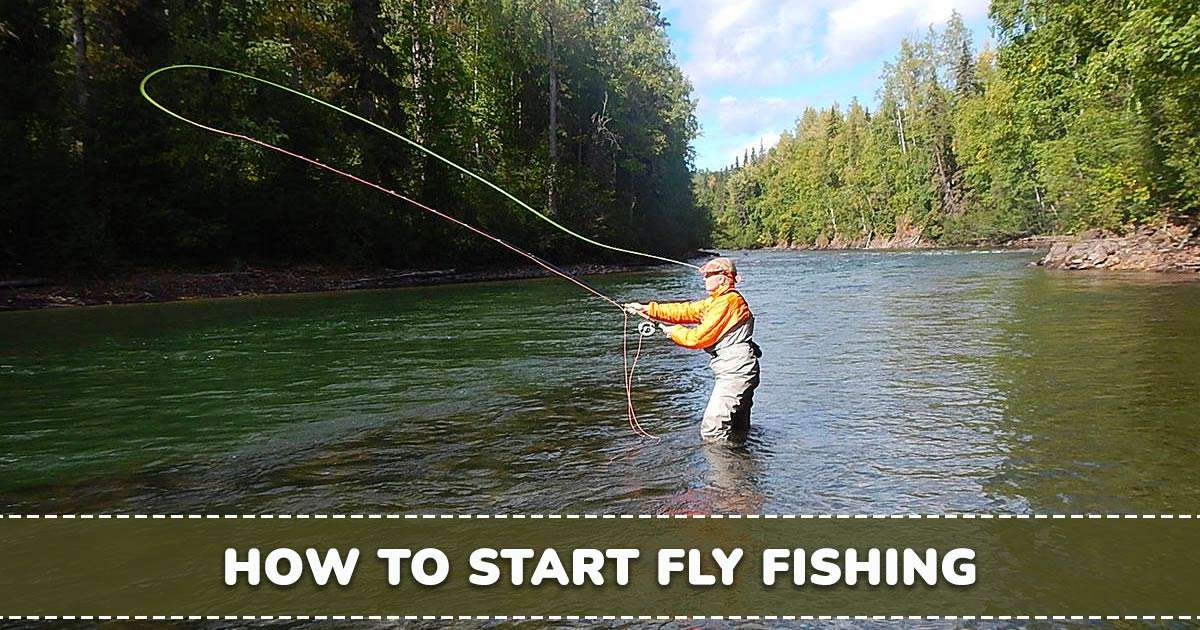How to Start Fly Fishing: Expert Advice

Fly fishing is a challenging yet deeply satisfying sport or hobby, rooted in history but continuously evolving thanks to passionate innovators. Similar to timeless sports such as golf or skiing, fly fishing remains relatively unchanged yet continues to progress. Here’s what beginners should keep in mind to start their fly fishing adventure.
Know where to go and when
Getting started on fly fishing means you must know the best places and when’s the best time to visit. Fly fishing is a fun way to catch fish using different rods and flies for each type of fish. Trout are usually found in streams or rivers, with the best fishing in late spring or mid-autumn when the water is between 45°F and 65°F. Even in summer, fishing can be good in tailwaters like the White River in Arkansas, the Bighorn in Montana, and the Farmington in Connecticut. Fishing on lakes and ponds is also fun, where you might use special lures for bass or pike, or catch trout with small flies.
Saltwater fishing is tough but exciting, with big fish like tarpon and bonefish. You’ll usually need a boat and a guide for this. Companies like Orvis provide updates on fishing conditions, and the USGS monitors rivers for information on water flow and temperature. Apps like RiverApp can help too. Talk to local experts for the best fishing spots and tips.
What to use
Starting with fly fishing requires the right equipment. You can get a complete beginner fishing set for under $350 from places like Orvis or Bass Pro Shops. They have everything you need and experts to answer your questions. For beginners, you’ll need a nine-foot, 5-weight rod with a matching reel, a WF 5-weight floating line, a few leaders, and some tippet. A small box of universal flies should work for most North American waters. If you’re not sure what all that means, keep reading!
Rod
Fly fishing doesn’t have to break the bank. You can find affordable rod, reel, and line packages at stores like L.L. Bean, Orvis, and Bass Pro Shops. Rods and reels come in different weights and action types, with a nine-foot, medium-action rod being a common choice for freshwater fishing. A five-weight setup is versatile for trout, panfish, and small bass, while a six-weight setup might be better if you’re going after bigger bass. Heavier rods, like seven to nine weights, are for saltwater or larger freshwater fish like pike or steelhead. An eight-weight, nine-foot fast-action rod is a good pick for those.
Reel
Your reel should match the weight of your rod, although some reels can handle a range of weights. Reels can also have a small or large arbor, which affects how quickly you can reel in a slackline. A small arbor is fine for trout and bass, while a large one is better for tough fish like bonefish, pike, and steelhead.
Line
Just like with reels, your fishing line should match the weight of your rod. If it’s too light or too heavy, it won’t work well. Nowadays, there are specific lines for different conditions, fish, and casting styles. You’ll want a cold or warm water line depending on where you’re fishing, but extreme temperatures matter most. Floating lines are common and good for most fishing. For deeper spots, you might need a sinking line, especially in lakes or fast rivers. These are rated by weight and sink rate. Weight-forward floating lines are popular and work for lots of fish. Brands like Orvis, Rio, and Scientific Anglers are trusted for lines, and it’s smart to ask local experts for advice.
Leaders and Tippet
At the end of your fishing line, you’ll need a leader, which is usually a single piece of nylon that tapers from thick to thin. Leaders come in different weights, from 0X to 8X, and lengths. For a five-weight setup, a 5X nine-foot leader works well, but you can use 3X or 4X for stronger fish, and 6X to 8X for smaller ones or experienced anglers.
Add a piece of tippet to the leader’s end, which is like a fishing line and protects it from getting too short when changing flies. Match your tippet gauge to your leader or use one size smaller. Leaders and tippets wear out over time, but you can reuse flies with care, like drying them after use to prevent damage.
Flies
Picking the right flies depends on the fish, where you are, the weather, and the time of year. Some standard flies work for many situations, but it’s best to ask a local shop or guide for advice. Fishing reports often list popular flies and insects you’ll find each month.
Accessories
While getting your essential fly fishing gear is a start, having a few extra accessories can make your fishing trips better and help you catch more fish. Things like packs, vests, nets, and clothing are personal choices and should match the type of fishing you’re doing. For a trip to warm places like the Florida Keys, comfortable shorts, flip flops, a lightweight sun shirt, sunglasses, and a hat are enough.
But for other places and fish, you might need more gear like waders, wading boots, and rain gear. Even though specialized gear might seem pricey, it’s worth it for the quality and durability. At least, you should have a pack or vest, a fish-friendly net, polarized sunglasses, and a hat.
How to properly cast
Once you get into fly fishing, you’ll slowly learn how to cast. Casting is important when you’re new to fly fishing. You need to cast your fly accurately to where the fish are. If your cast is too short or too far, the fish might not notice your fly. And if it’s too close or too long, the fish might get scared away. Different fish, conditions, and flies need different casting techniques, but the key is to put your fly exactly where you want it on your first try.
It’s kind of like using a spring—the rod bends when you cast, then snaps forward to send your line out. Orvis offers beginner fly fishing classes across the US, which are great for newbies. If you prefer learning on your own, there are lots of casting videos on YouTube and other places. You can practice your cast in a big open space with a piece of yarn instead of a hook. Start with a big target and work your way down to smaller ones as you get better.
Get Started with Fly Fishing Through Our Guide
Ready to embark on your fly fishing adventure? Equip yourself with the right gear, from rods and reels to lines and flies. Learn where and when to fish, and don’t forget essential accessories like nets and sunglasses. Practice your casting skills to ensure the accurate delivery of your fly. Whether you’re a beginner or an experienced angler, there’s always something new to discover when it comes to fly fishing.

